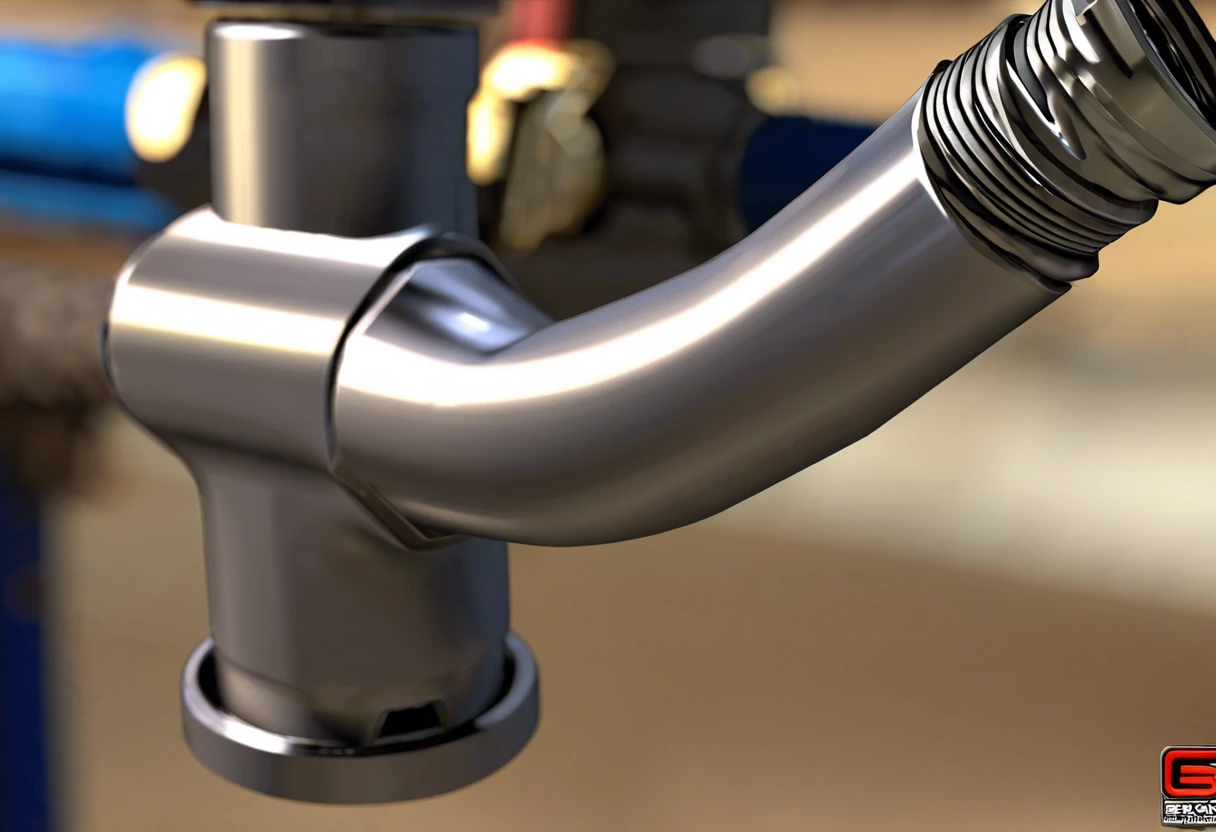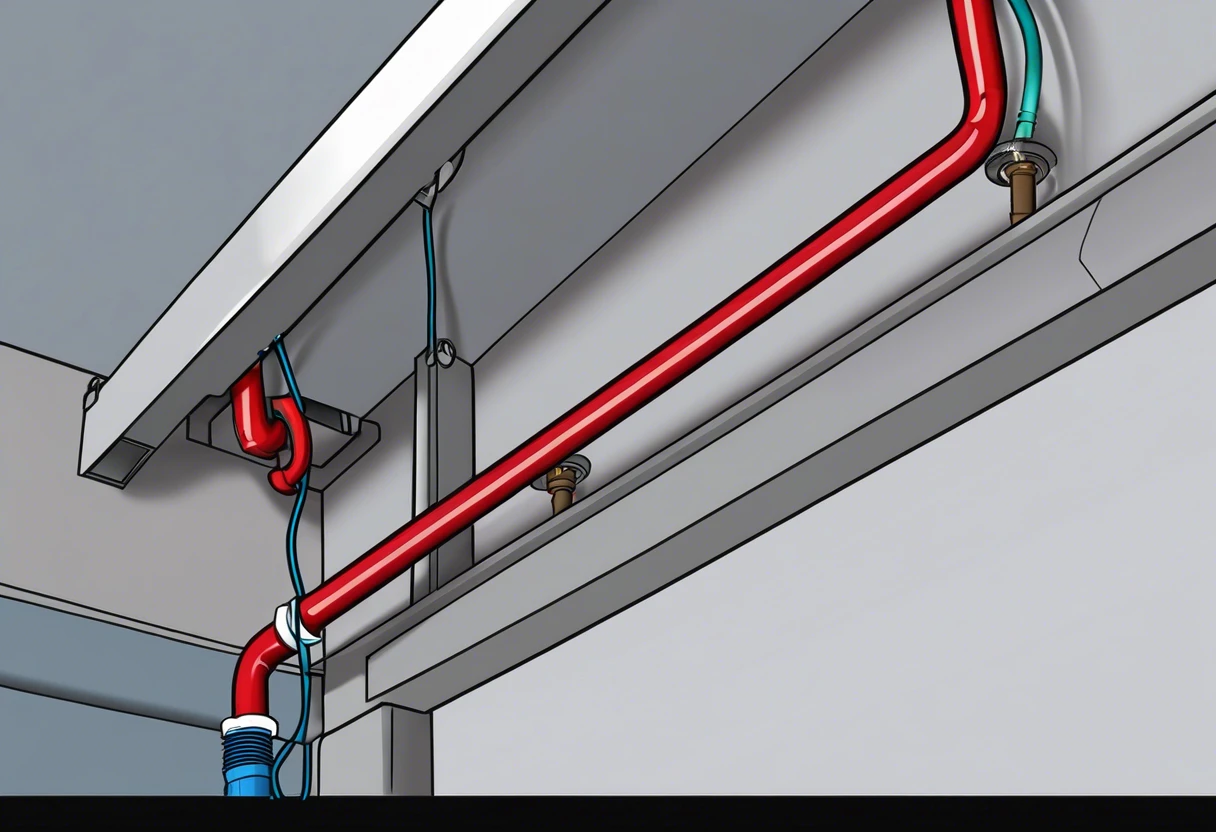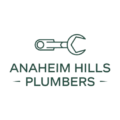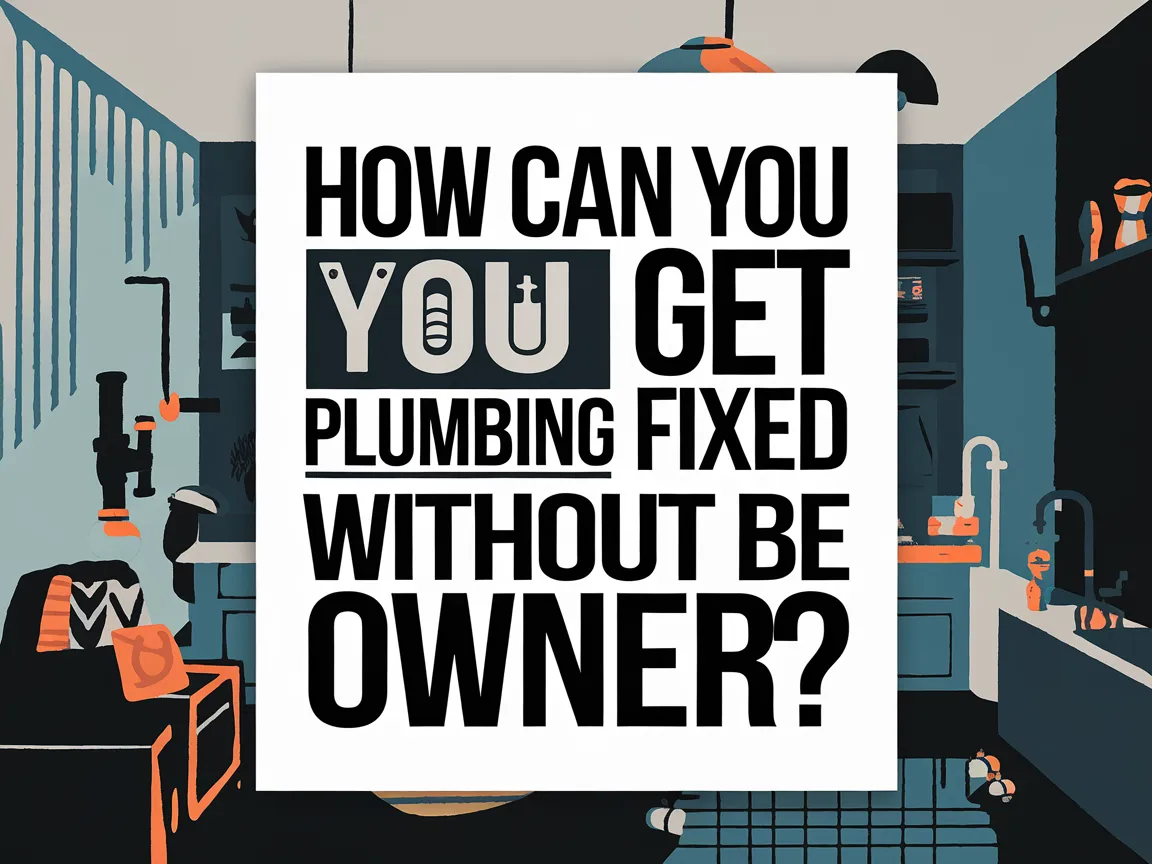Understanding the 1/8 Bend in Plumbing: Definition, Function, and Cost
Published on: March 26, 2025 | Last Updated: March 26, 2025
Written By: anaheimplumbers
So, you’ve found yourself wondering what a 1/8 bend in plumbing is? It’s a great question and one that pops up quite often. You might be a DIY enthusiast looking to tackle a plumbing project or perhaps just someone trying to understand your home’s plumbing better. Either way, you’re in the right place!
I totally get that plumbing can feel overwhelming at times. With years of experience right here in Anaheim Hills, I’ve seen how confusion can arise over even the simplest components. No worries, though! I’m here to break down what a 1/8 bend is and help you get a clear understanding of its role in your plumbing system.
As I walk you through various aspects of a 1/8 bend in plumbing, we’ll cover its definition, functionality, related concepts, cost implications, and when to call in the pros for help. Together, we’ll demystify this crucial piece of plumbing equipment, and you’ll be stoked to learn all about it!
Page Contents
- 1 What is a 1/8 Bend in Plumbing?
- 2 Key Takeaways
- 3 Exploring the 1/8 Bend in Plumbing: Definition and Functionality
- 4 Related Concepts and Comparisons to 1/8 Bend in Plumbing
- 5 How Much Does a 1/8 Bend in Plumbing Cost?
- 6 When to Consult Professionals for 1/8 Bend Plumbing Solutions
- 7 Understanding the Importance of Proper Installation of 1/8 Bends
- 8 Identifying the Right Fittings for Unique Plumbing Situations
- 9 Frequently Asked Questions (FAQ)
- 10 Final Thoughts on the Importance Of 1/8 Bends in Plumbing
- 11 Additional Resources for You:
What is a 1/8 Bend in Plumbing?
Yes, a 1/8 bend is a plumbing fitting that allows pipes to change direction gently by 15 degrees, typically used in tight spaces. Consider pipe size and compatibility for proper flow. It’s perfect for avoiding sharp angles in your California plumbing system.
Key Takeaways
This article covers essential insights about the 1/8 bend in plumbing, including:
- Understanding the definition and functionality of a 1/8 bend is crucial for your plumbing projects.
- Learn how a 1/8 bend compares to other pipe fittings in terms of angle and efficiency.
- Gain insight into the costs associated with purchasing and installing a 1/8 bend in plumbing.
- Know when to seek professional help for installations or repairs involving 1/8 bends to ensure a job well done.
Exploring the 1/8 Bend in Plumbing: Definition and Functionality
To elaborate, a 1/8 bend is a type of fitting designed to change the direction of pipes or tubing by 15 degrees, allowing for smooth fluid flow, especially in constrained areas. With its unique angle, the 1/8 bend is often utilized in various plumbing applications, such as venting or drainage. Think of it as a quick twist in the road of plumbing, promoting efficiency.
Applications in Plumbing Systems
In my experience with plumbing installations throughout Anaheim Hills, I’ve found 1/8 bends to be incredibly useful in both residential and commercial systems. These fittings are essential for maneuvering around obstacles such as structural beams or the beautiful palm trees that grace our area. Additionally, they prove invaluable when rerouting drains under sinks or directing vent pipes as needed. As you plan your excavation work, it’s important to understand the steps involved in obtaining a plumbing permit. Having this knowledge ensures that your project remains compliant and on schedule, which is elaborated in the plumbing permit process for excavation.
Materials Used for 1/8 Bends
When it comes to materials, you’ll find 1/8 bends made from PVC, ABS, or copper, depending on the specific job requirements. Recently, I used a PVC 1/8 bend for a homeowner’s irrigation system in sunny OC, and it worked beautifully—no leaks!
When considering a home purchase, it’s crucial to evaluate not only the aesthetics but also the plumbing system. Key factors such as flow rate, pressure drop, and climate conditions can significantly affect the efficiency of plumbing materials. For example, while lightweight PVC is typically suitable for indoor applications, it may struggle to withstand extreme outdoor temperatures. If the plumbing system includes older materials, this can be a red flag. To make a well-informed decision, I recommend reviewing the implications of galvanized plumbing. This assessment will help you determine whether to proceed with the purchase or consider other options.
The beauty of the 1/8 bend also lies in its adaptability. If you have to choose between a 1/8 bend versus a 1/4 bend—where the latter changes direction by 90 degrees—remember that selecting the correct bend could save time and reduce labor during your installation.
For instance, on a recent job in the valley, I used a couple of 1/8 bends to navigate tight spaces under a bathroom sink. This not only kept everything organized but also avoided potential future headaches—something you’ll definitely want in plumbing!
In summary, understanding the nuances of 1/8 bends in plumbing can significantly enhance your DIY efforts—after all, fixing plumbing should feel as smooth as surfing through summer waves, not wrestling through hurdles!

Related Concepts and Comparisons to 1/8 Bend in Plumbing
What is a 1/8 Bend in Plumbing PVC?
Understanding a 1/8 bend in PVC (Polyvinyl Chloride) is vital when navigating tight corners in plumbing. This fitting changes the pipe direction by 15 degrees, facilitating smooth transitions in constrained plumbing areas. When planning your pool plumbing, it’s essential to choose the right type of PVC to ensure both efficiency and durability. To make an informed decision, you can discover the various options that best suit your needs by learning more about what type of PVC for pool plumbing is optimal.
What is a 1/8 Bend in Plumbing Fittings?
Plumbing fittings, such as 1/8 bends, play a vital role in any plumbing system. These fittings facilitate the connection of different lengths of pipe at small angles, providing the necessary flexibility to maintain functionality. Recently, I installed several 1/8 bends in my neighborhood, effectively saving space while ensuring optimal water flow—pretty neat, right? Additionally, understanding the significance of using the right fittings, like reducer fittings, can greatly enhance your plumbing system’s components. If you’re interested in learning more about their importance and functionality, take a moment to explore why you need a reducer fitting in plumbing.
1/8 Bend vs. 1/4 Bend: Key Differences
The primary difference between a 1/8 bend and a 1/4 bend is the angle change: 15 degrees versus 30 degrees. When possible, opting for the 1/8 bend can lead to smoother transitions, making it particularly advantageous in tight installations. For instance, during a recent kitchen remodel, I strategically used multiple 1/8 bends to keep the plumbing neatly concealed against the wall. However, it’s also essential to consider components such as angle stops, which significantly influence water flow in plumbing systems. By understanding what angle stops are, you can make more informed decisions about your installation options.
Understanding 1/16 Bend in Degrees
An interesting option is the 1/16 bend, which shifts the angle by only about 7.5 degrees. These subtle twists can be particularly invaluable in intricate plumbing setups, reminding us to include them when designing your layout. Additionally, understanding various components, such as angle stops, is essential for enhancing your grasp of plumbing systems. For instance, when making adjustments, you might want to refer to what an angle stop is as part of your planning process. This knowledge will not only improve your design but also streamline the overall efficiency of your plumbing project.
Using 1/8 Bend Pipe in Plumbing Projects
These fittings are incredibly versatile. A friend of mine recently used many 1/8 bends in his plumbing system rebuild, which made fitting the water lines into the attic much more manageable. This flexibility is a significant advantage for those juggling multiple projects simultaneously.
Advantages of 1/8 Bend PVC
The strength of 1/8 bend PVC lies in its speed and efficiency, making it a favored choice for many DIY enthusiasts. Its lightweight nature allows for easy handling, particularly advantageous when tackling home projects. In areas like Anaheim Hills, where heavy rains often follow fire seasons, plumbing issues can arise more frequently. Therefore, every angle in your plumbing setup is crucial. To safeguard your plumbing system from potential winter damage, it’s essential to winterize your plumbing properly. This process ensures that your pipes function efficiently when temperatures plummet. For detailed guidance on how to winterize plumbing in your house, you can find effective tips here to help prevent costly repairs.
- What is a 1/8 bend in plumbing PVC? It changes direction by 15 degrees.
- What is a 1/8 bend in plumbing fittings? Flexible connection methods at tight angles.
- 1/8 bend in degrees: equals 15 degrees.
- 1/8 bend vs 1/4 bend: 15 degrees vs 30 degrees.
- Insights on 1/16 bend: yield small 7.5-degree shifts.
- Using 1/8 bend pipe: can simplify projects dramatically.
- Advantages of 1/8 bend PVC: include high efficiency in tight spaces.
How Much Does a 1/8 Bend in Plumbing Cost?
If you’re considering the installation of a 1/8 bend, plan to budget between $50 to $150, depending on materials and whether you choose to tackle the work yourself or hire a professional. Be mindful of potential unforeseen expenses like permits or additional fittings; these costs can add up unexpectedly!
Based on my experience, DIY installation usually takes about one to two hours. Last summer, I successfully installed several bends in a single day at a home in Anaheim Hills, which was quite the achievement. While historical costs for plumbing services have remained steady, it’s advisable to budget around $100 for labor should you decide to hire a plumber. Investing in professional help is often worth it for both peace of mind and a reliable installation. If you’re contemplating a career in plumbing, understanding the qualifications necessary is essential. For instance, learning about the time required to become a master plumber can provide valuable insights into the training process. You can explore this further by checking out how long it takes to be a master plumber to get a clearer picture of the necessary steps involved.
Cost Breakdown for a 1/8 Bend
| Cost Variations | Low Estimate | High Estimate |
|---|---|---|
| Materials (Pipe, Fittings) | $20 | $60 |
| Labor (DIY) | $0 | $100 |
| Labor (Professional) | $50 | $150 |
| Potential Unforeseen Costs | $10 | $40 |
When to Consult Professionals for 1/8 Bend Plumbing Solutions
So, you’re knee-deep in a plumbing project, and that little 1/8 bend just isn’t going quite as planned? That’s when it’s time to seek expert help. Always choose a licensed professional with positive reviews, as their experience can make a significant difference in navigating any challenges you encounter. When tackling plumbing tasks, it’s crucial to understand how long it takes for adhesives to set properly; this knowledge ensures that everything stays secure. For detailed information on the drying time of plumbing glue, be sure to check out this helpful resource on plumbing glue drying.
Benefits Of Hiring a Local Anaheim Hills Plumbing Expert
One significant advantage of hiring a local plumbing expert in Anaheim Hills is their familiarity with the area’s unique quirks and regulations. For example, in a recent project, my local knowledge proved invaluable in ensuring full compliance with city plumbing codes, which is especially important when addressing complex issues like 1/8 bends. Additionally, it is essential to clarify the financial responsibilities regarding plumbing repairs; many renters in Anaheim Hills may wonder if they are liable for these issues. Understanding this aspect can help prevent unexpected costs. To gain deeper insights into these responsibilities, you can explore more information about Anaheim Hills plumbing regulations.
Collaborating with a local professional ensures that you adhere to the plumbing codes and regulations specific to Anaheim Hills. This compliance is particularly crucial when dealing with intricate plumbing components, such as 1/8 bends. For those interested in gaining a more comprehensive understanding of this field, you can explore how to become a plumber in Anaheim Hills to delve into the necessary steps and qualifications.

Understanding the Importance of Proper Installation of 1/8 Bends
Correctly installing a 1/8 bend can save serious headaches down the line. An improper fit can lead to notorious leak issues or unfortunate blockages—no one wants that! I remember helping a neighbor who disregarded a minor misalignment, ultimately leading to a messy water disaster. Trust me; paying attention during installation makes a significant difference.
Best Practices for Installing a 1/8 Bend
- Ensure all surfaces are clean before installation to maintain a strong seal.
- Use the right tools to secure fittings without over-tightening.
- Test for leaks before sealing everything up; it’ll save you future hassles!
Common Mistakes to Avoid
- Ignoring Pipe Compatibility: Always match your bend to the pipe material; a PVC bend on copper will lead to issues.
- Over-tightening Fittings: Tighter is not always better; over-tightening can result in breakage. Just snug them up!
- Not Considering Temperature Changes: In sunny Anaheim Hills, heat can cause materials to expand. Be mindful when completing your fittings.
Identifying the Right Fittings for Unique Plumbing Situations
Sometimes your plumbing system requires more than a standard 1/8 bend; let’s explore other useful fittings!
Different Types of Plumbing Bends
Here’s a rundown comparing some common plumbing bends to highlight where each excels:
| Bend Type | Angle Change | Ideal Use |
|---|---|---|
| 1/8 Bend | 15 Degrees | Tight corners and compact spaces |
| 1/4 Bend | 30 Degrees | More open spaces where sharper turns matter |
| 1/2 Bend | 90 Degrees | Creating sharp corners in more extensive systems |
Choosing the Right Bend for Your Project
When selecting a plumbing bend, it is essential to consider both your project’s spatial constraints and flow requirements. During a recent plumbing job, we faced a challenging tight area that required us to use various fittings, making the task feel like solving a jigsaw puzzle. If you find yourself struggling with stubborn connections or fittings, being equipped with techniques to loosen plumbing fittings can significantly save you time and effort. Carefully analyze your situation to determine the best option for your needs. If you’re unsure, discover helpful methods to loosen fittings.
Frequently Asked Questions (FAQ)
I often get questions about 1/8 bends in plumbing and their uses. Here are some of the most common inquiries:
What Angle is a 1/8 Bend?
A 1/8 bend in plumbing typically creates a 15-degree angle, facilitating direction changes in piping systems with minimal resistance.
Is a 1/8 Bend 45 Degrees?
No, a 1/8 bend does not create a 45-degree angle; instead, it adjusts the pipe direction by 15 degrees.
What is the Difference Between a 1/4 Bend and a 1/8 Bend?
The difference lies in their angles: a 1/4 bend is 30 degrees, while a 1/8 bend creates an energizing 15-degree transition, which is particularly suited for tighter scenarios.
How is a 1/8 Bend Used in Plumbing?
A 1/8 bend is utilized to navigate plumbing systems through confined spaces, ensuring efficient flow with minimal pressure loss.
When Should I Use a 1/8 Bend in My Plumbing System?
Utilize a 1/8 bend when you need to route pipes around obstacles without sacrificing flow efficiency.
Can I Replace a 1/8 Bend With Another Fitting?
While you can replace a 1/8 bend, doing so may impact the system’s overall angle and flow.
Final Thoughts on the Importance Of 1/8 Bends in Plumbing
To wrap up our discussion, we’ve explored what a 1/8 bend is, its definition and functionality, comparisons to similar plumbing concepts, cost considerations, and when to seek professional assistance.
In simpler terms, a 1/8 bend in plumbing is a fitting that creates a slight turn in your pipes, making it essential for proper drainage and flow. For plumbing solutions, feel free to check out our services at Anaheim Hills Plumbers. You can use our chat function for quick quotes or to connect with professional plumbers.
Additional Resources for You:
- Anaheim Public Utilities (Water Services and Regulations)
- 4 SV 1/8 BEND
- 1-1/2″ DWV PVC 1/8 Bend D321-015
- Charlotte Pipe 2 in. DWV PVC Comb Wye and 1/8 Bend Fitting PVC005010800HD – The Home Depot
- Spears P321 Series PVC DWV Pipe Fitting, 1/8 Bend, Elbow, 1-1/2″ Hub: Industrial Pipe Fittings: Amazon.com: Tools & Home Improvement

